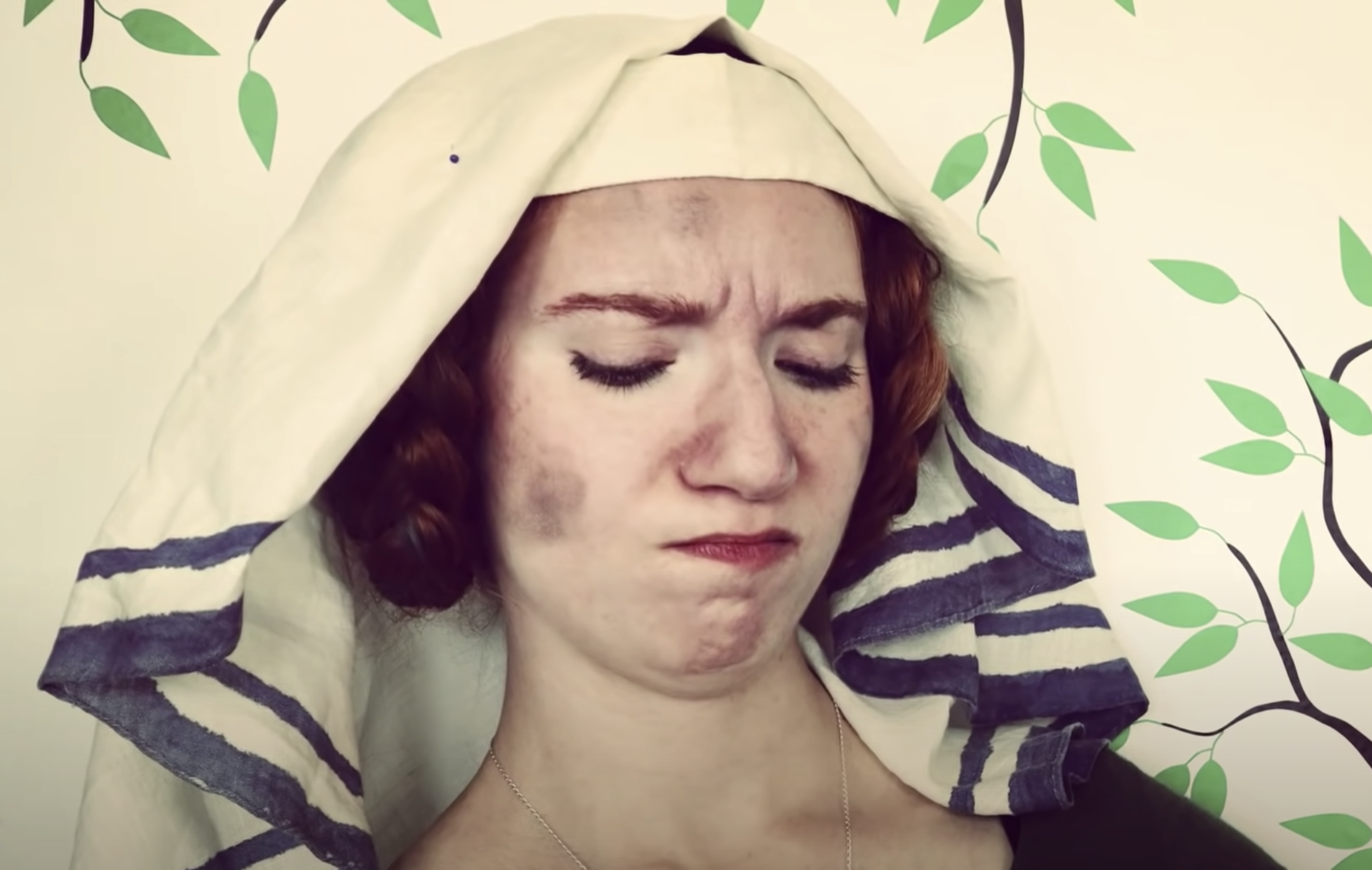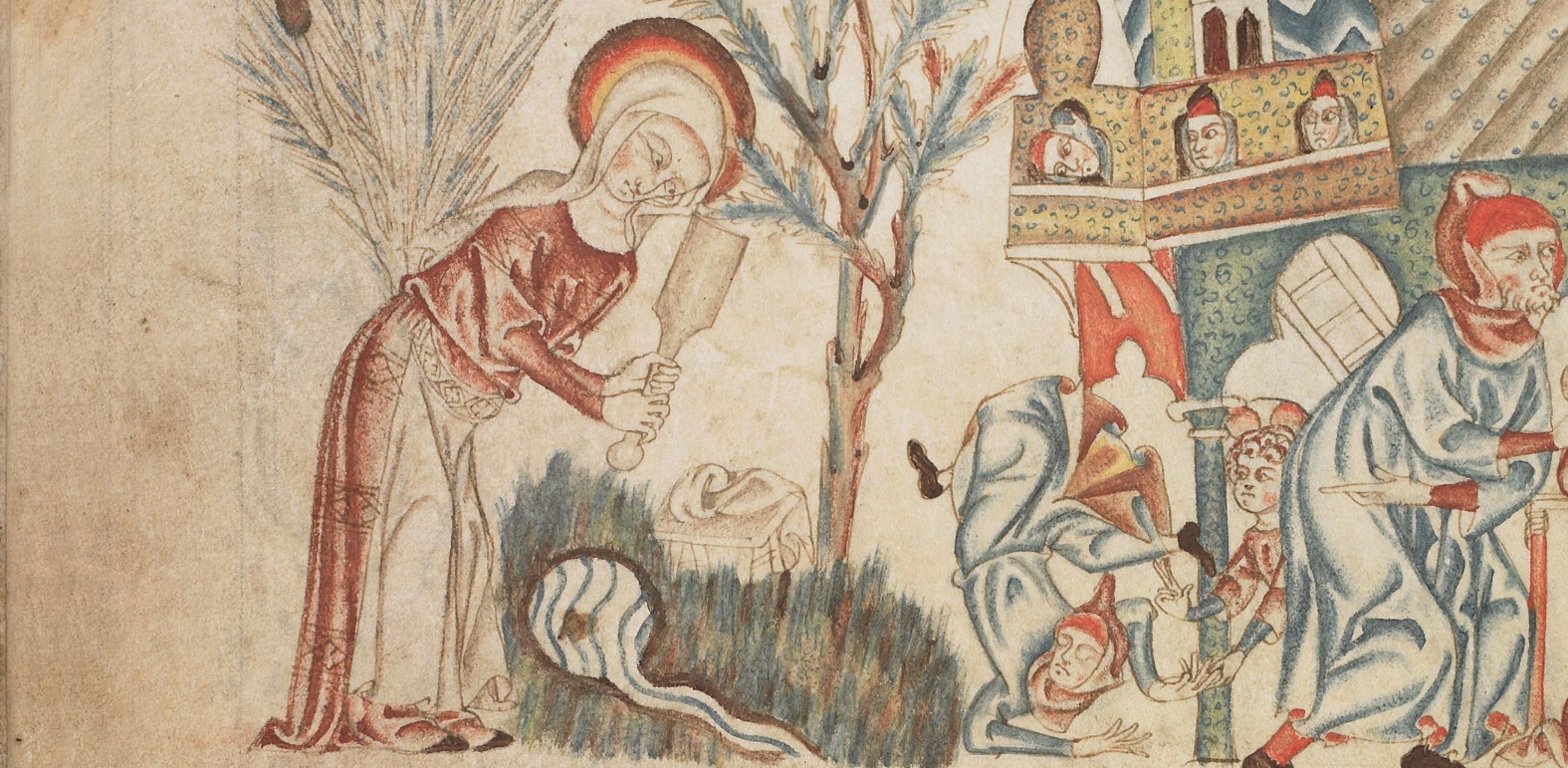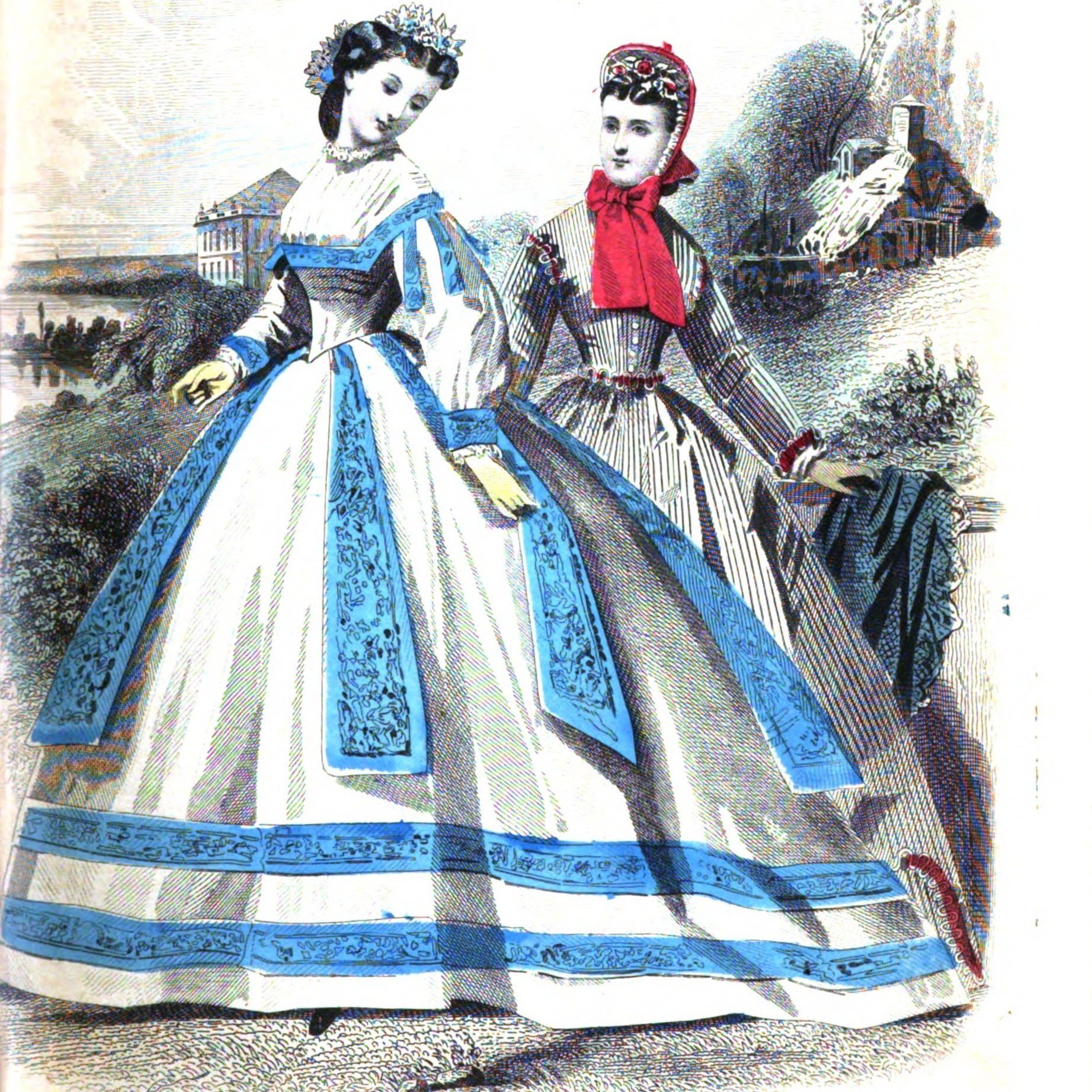Why medieval people didn't wash their hair, and how it stayed clean
Why medieval people didn't wash their hair, and how it stayed clean
Medieval people didn't bathe or wash their hair, right? Hair care in the middle ages involved no shampoo, but they still kept their hair clean. As a professional hairstylist, I think this historical myth needs to be debunked. Busting this myth comes down to understanding what resources Medieval people had for personal care, and reveals that historical people were actually quite clever about working with what knowledge they had.
But that’s gross! (isn’t it?)
Washing hair with soap or shampoo is a modern idea, dating from the early 20th century. Shampoo wasn't even invented until the 1930s! In the Middle Ages, contaminated water, harsh soap, and needing to use some other rather gross things to clean your laundry meant that washing hair to clean it wasn't a regular possibility. Instead, medieval people used a combination of styling choices, headwraps, and combs and brushes to keep hair as clean as possible. Long hair was braided and pinned up, keeping it from getting tangled or suffering breakage, similarly to protective styles in Black haircare. Hair was usually worn in braids and pinned to the head, covered in a clean linen veil or cap which was changed as often as possible, and thoroughly brushed or combed out twice a day, all of which helped to keep it surprisingly clean and tidy!
Did medieval people ever wash their hair?
Medieval people did sometimes wash their hair, although only in exceptional circumstances. The Trotula, a collection of medieval medical texts, has an entire book devoted to personal care and cosmetics, including several recipes for hair washes, conditioners, styling products, and even hair color. A recipe from a 13th century physician was still being used 700 years later in Edwardian times! Even though Medieval people couldn't clean their hair with shampoo and water the way we do, they still took very good care of their hair with the resources they had available.
-
The medieval world was a horrible, dirty, unhygenic place! No one kept clean at all, everything smelled horrible. No one bathed, no one washed their hair—
[record scratch]
Oooookay, while that's technically not 100% wrong, I think we need to have a talk about why this idea belongs over in the naughty corner with the one about corsets universally being patriarchal torture devices.
Hi, I'm V, and in addition to being a historical fashion nerd, I'm also a professional hairdresser! At work my focus has always been on the science of hair and haircare, rather than styling, so whenever I hear one of these stories about how historical people's haircare was Just So Backwards, I want to know what was actually going on, on that level.
First thing : historical people were a lot smarter than we tend to give them credit for. So many of the weird things we hear about, like only drinking beer or ale instead of water, actually make perfect sense when you consider what those historical people had to work with. And when it came to washing things (any things), what medieval people had to work with was questionably-sanitary water, ammonia, and lye. Those already don't sound like things you want in your hair, and you're about to want them in your hair even less. Many of the available water sources (wells, ponds, streams, rivers) were not reliably clean, and people got sick after drinking from them. They knew that water carried disease, and in the absence of modern water treatment, they just tried to keep it off their bodies unless they were sure it was safe, or they were washing off something that would definitely make them ill, like London's sewage workers swimming in the Thames at the end of the day. Medieval soap, for those that could get it, was too harsh and strong to be used for cleaning human beings, it was pretty much only for washing clothes. Laundresses often had what we'd nowadays call contact dermatitis because the soap made their hands so rough and red. And for those that couldn't get soap, which was a lot of people since soap cost money . . . you did your laundry with a combination of lye from wood ash, and ammonia from stale human urine.
Alright, so washing with soap or soap-alternatives is right out. Then people must have gone around with absolutely disgusting hair, yeah? Hmm, not really. What we have to realize is that our modern idea of "clean hair" meaning "freshly washed with something sudsy" is just that : A modern idea. Shampoo itself is a 20th century invention, but more than that, it's the hairstyle trends of the 20th century that created a need to wash hair frequently in the first place. Haircare and styling as we know it, where hair is washed often and worn down as the default, is only about a hundred years old. In the 1920s and 30s, the default fashionable hairstyle changed from very long hair pinned up in different ways ways to a shorter shaped haircut, worn down or partially pinned back. Before that, wearing one's hair down in public was seen as indecent if you were considered an adult woman rather than a child. Methods of styling changed too, and the default method of curling hair became a "wet-set" where wet hair is put on rollers or in pin curls until it dries. Styling products like gels and setting lotions became more common, but these need to be washed out in order to re-set the hair. The type of cleansing product we call shampoo was invented in the mid-1930s and the weekly wash cycle was born— but with pre-1920s hairstyles, freshly-shampooed hair simply wasn't necessary.
Remember how I said updos were the default hairstyle, before the 20s? That is how people kept their hair clean, surprising as it sounds to our modern ears. There's a practice in Black haircare called "protective styling", where the ends or lengths of hair are tucked away, often using braids or twists, and sometimes kept covered with a headwrap, to protect it from the breakage and dryness that can happen when it's worn loose. This tradition goes back thousands of years in Black culture, and many familiar protective styles like box braids are only appropriate for coily hair. However, the principle of styling hair to insulate it from dirt and damage works on all hair textures, and it’s a huge part of Medieval European hairstyles too! When hair is up, even in a simple braid or bun, it's not moving around freely so it's not getting tangled or breaking. It's also safer from dryness, bad weather, and much of the dirt that might get into it during daily life. If we look back at Western hairstyles, there's a huge correlation between how much of the hair was covered, and how frequently it was washed. Once a month was recommended in the Edwardian and late Victorian eras when day caps had gone out of fashion. Medieval headwear covered nearly all of the hair with a cap and/or veil, with the hair braided and pinned or "taped" to the head with ribbons. Not only does covering hair keep external dirtiness off of it (and that could include things like coal- or wood-smoke and farm dirt), it also absorbs excess natural oils and sweat from the hair. Veils and caps and kerchiefs were changed daily, sometimes more often, so the hair was kept clean by wrapping it in fresh linen.
If you're thinking "well that doesn't sound like enough", then, you're not wrong. The biggest part of the Medieval haircare routine was thoroughly brushing or combing the hair out twice a day. Brushing hair from roots to ends distributes the natural oils throughout the hair, keeping the roots from getting greasy and the ends from getting dry, so it's cleaning and conditioning at the same time. And brushing the scalp helps to exfoliate away dead skin and buildup, so all that's getting cleaned off too. This is where the idea of brushing long hair with a hundred strokes comes from. The combs we have from the medieval period have very fine teeth, so they could effectively remove pests— and hundreds of years later, this is still one of the most common methods of treating head lice. A book from the Elizabethan era gives an example of linen cloths being used to rub the hair and scalp clean, absorbing excess oil and dirt just like caps and veils did. Cleaning hair the way we do with water and shampoo or soap wasn't an option, so people used clean linen and combs and brushes instead.
While washing hair wasn't a regular part of the medieval haircare routine, it's not strictly true that people never washed their hair. People did bathe, although it was so much work to fill a tub with clean hot water without plumbing that it was usually in rivers and streams, or in communal bathhouses. Illustrations of people in bathtubs tend to show them with their headwear still on, suggesting hair wasn't washed during baths. The Trotula, a 12th century text written by an Italian female healer, describes a recipe for a hair wash made by boiling water with lye from the ashes of burnt vines, barley chaff for scrubbing, licorice wood, and cyclamen. However, the text then says "After the washing, let her leave it to dry by itself, and her hair will be golden and shimmering", so this might have been used to color hair more than to simply to keep it clean. If someone doesn't want their hair washed with lye, the 13th century physician Henri de Mondeville says they should use egg yolks mixed with warm water instead, which is . . . actually not the worst idea, and is the basis for several Edwardian hair wash recipes.The Trotula also contains recipes for hair conditioners, powders, and perfumes, most of which are to make the hair smell nice as much as anything else. This was practical as well as ornamental : cloves can help to repel pests, which is why so many 18th century hair powders and pomades use them too. It is worth noting that these were expensive and probably only for the upper classes, but someone of lesser means could make variations on the recipes using easily-accessible aromatic herbs like rosemary. The Trotula includes an entire book just on personal care, hygiene, and cosmetics, and publishing a book was quite a bit of work in the time before printing presses. So I think it's fair to say that medieval people cared very much about keeping their hair clean and presentable . . . they just had different standards and methods.
So does this mean you should throw away all your modern haircare? Sure, you could stop washing your hair, wear it up in braids all the time, and brush it meticulously twice a day, and it might stay cleaner than you'd think. But, we're not medieval people. We don't live in the medieval world. I, for one, love my 21st century dyed hair and nothing will make me give it up, even if I might look more historically accurate without the blue streaks. Medieval people were taking care of their hair to the best of their ability with the resources and knowledge they had. Just because we have different standards and better resources now, doesn't mean they were completely backwards and stupid. And just because they weren't completely backwards and stupid, doesn't mean the world hasn't moved on. So often we think about the past and the present as some sort of zero-sum situation, where either the past was totally primitive and now we do everything right, or the present is too artificial and historical people had it better. It's just not that simple [laughing]. Nothing about it is mutually exclusive. We can accept that people throughout history made some really clever choices given what they had to work with, and at the same time we can be really glad for our 21st century shampoo and solar power and YouTube videos. And honestly? In six hundred years, if we're still around . . . I bet people will be saying how the 21st century was so unhygienic, they knew nothing at all about caring for their hair—
Thank you for watching! If you had fun and learned something, don't forget to leave a like, and subscribe for more historical fashion myth-busting. If you want to enable my history-nerd nonsense, go to ko-fi.com/snappydragon and throw a few dollars in the Tea Fund! And, tell me in the comments if you'd ever try any historical hair-care techniques, because . . . [whispers conspiratorially] I only wash my hair once a week.






